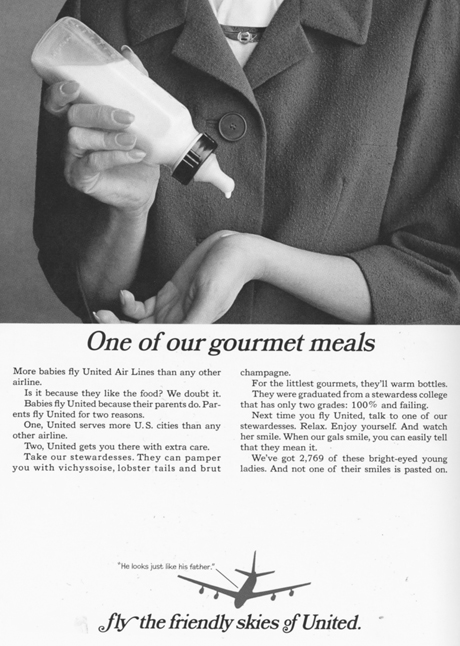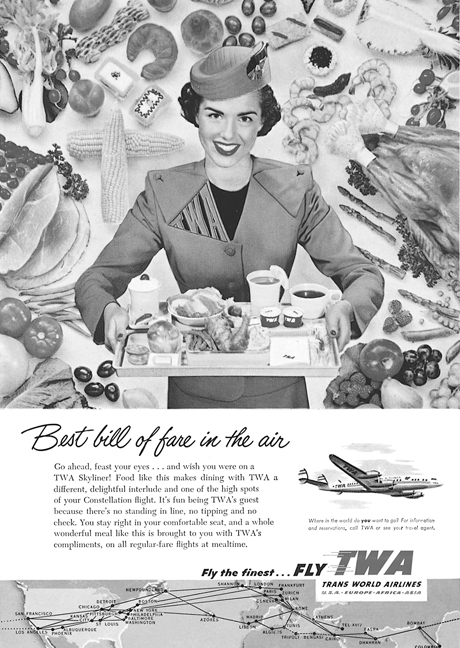|
Packaging a brand with a sellable message to hide its ethos sounds archaic. Back then in the 60's it was cutting edge. In this case the ad agency might have permanently altered UA's core value and persona unintentionally. Brand authenticity was seldom an agency's first priority unless it contributed to short term revenue boost. Sure, culture can change but it takes leadership's vision and time. Selling the friendly skies
BY VICTORIA VANTOCH, AB’97 | UNIVERSITY OF CHICAGO MAGAZINE —JULY–AUG/13 American stewardesses and the making of an iconic advertising campaign. ECONOMICS & BUSINESS | EXCERPT During the Mad Men era, virtually every heavy-hitting advertising agency was based in New York City. But hundreds of miles away, the boutique Leo Burnett Agency on East Randolph Street was proving itself a formidable competitor. In 1963, the Leo Burnett Agency was invited to bid for one of the nation’s most coveted ad accounts: United Airlines. Leo Burnett, the acclaimed ad- man behind the small Chicago agency, corralled his top creative team. They poured themselves into brainstorming sessions—analyzing United’s image, strategizing the pitch, and waxing philosophical about the future of air travel. Later that year, a cadre of United executives in pinstriped suits convened in a smoky boardroom to hear the admen’s pitch. The Burnett team laid it out: United was the General Motors of air travel—“professional, official-looking” and “a little stuffy and cold—coldly efficient, with a production-line attitude.” Then came the real blow: the ad team called United “stodgy” and “dull.” William Patterson, United’s president since its beginnings in 1934, prided himself on the airline’s hard-won reputation for reliability, but he knew that United desperately needed to sell more seats... - Full Article
0 Comments
Something I have been trying to emphasize with my partners and clients. However it's very hard to implement the change, not the technical nor the tactical part but the philosophy, strategic vision of the business and its core business model. Take McDonald for example, it did a great jobs in the recent years trying to portrait a healthier and greener image for itself. Unfortunately its core operation such as recipe and ingredients would not likely to change if the law is not broken or the negativity externality not exposed (We thank the whistle-blowers for keeping the pressure on). How can it be transparent and authentic if the message of being good is only a marketing pretext while the core strategy is still maximizing profits legally while not optimizing (health, as one of many) benefits for the customers? At the moment, it is much harder for a large corporation than a small startup to achieve genuine authenticity and transparency. |
Filip Yip:A designer, illustrator, repro-media consultant, brand strategist, new product developer, real estate investor, new venture builder, scuba diver, martial artist… and most importantly, husband and father, Filip holds a BFA from The Academy of Art University in San Francisco, and an MBA from The University of Chicago Booth School of Business. He is constantly seeking equilibrium between Form and Function; Purpose and Survival; He is equally comfortable with fuzzy feeling and fussy Archives
April 2024
Categories
All
|

